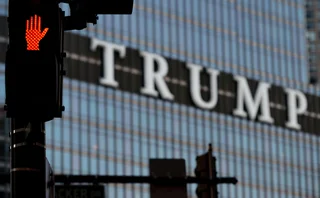
Shhh, don’t tell: the struggle to keep skew under wraps
Liquidity recycling by clients has made it more difficult for banks to keep skews quiet
The ‘six degrees of separation’ theory posits that people are never more than six social connections away from each other – even if they are complete strangers and move in very different circles. The theory has been popularised via the game Six Degrees of Kevin Bacon, in which players are challenged to connect any given actor to the eponymous movie star in six steps or less.
Similar daisy-chain relationships exist in foreign exchange markets – but it can be a costly game to play.
When a dealer is axed to trade a particular side of a currency, it may skew its pricing – that is, move either the bid or the offer closer to the market’s mid – to make it more appealing. This information is potentially valuable to other market participants, allowing them to infer the dealer’s position and trading intent, and some algorithms are designed specifically to exploit it. This has led to the development of ‘skew safe’ pools where banks can offload risk on trading platforms with trusted counterparties.
But the problem persists. In recent years, large liquidity providers (LPs) have set up direct streaming relationships with smaller dealers that can pass along the original pricing to their end-clients. If the original LP offers a skewed priced to a regional bank or a prime-of-prime broker client, with the client then recycling it to its own customer, the skew information can still be broadcast to the wider market.
Another issue is when a counterparty to the original skewing LP uses this pricing as a market data source for its own execution algorithms. The original LP loses control of the information.
Trying to keep skewed prices quiet is like trying to lose the Six Degrees of Kevin Bacon game. You don’t want to be connected back to the prolific actor; you don’t want to be drawn into a network where connections proliferate and you are just a step or two away from hungry, skew-sniffing sharks. So, banks have developed sophisticated tools to try and avoid leaky market nodes – clients that are transmitting information about the bank’s positions to the rest of the market.
Some have even assigned ‘skew leakage’ scores to certain clients to determine how often they can skew a price to them. If the client has a bad score and fails to make improvements, then the LP can decide to stop offering better prices.
However, detecting information leakage is incredibly difficult and the signals used to distinguish where, when and how skewed prices are being leaked are fairly weak. Banks also don’t want to be scared away from showing better prices to their clients because that would ultimately translate into lost business.
It’s possible to imagine a solution to all of this – an industry-wide effort that would knit together LPs, their clients, and trading platforms to ensure skewed prices are seen only by the intended recipient. Possible, but extraordinarily difficult. Until the day arrives when banks feel footloose and free to skew, they will continue playing the Six Degrees game, and hoping that their price and position information can be contained.
Only users who have a paid subscription or are part of a corporate subscription are able to print or copy content.
To access these options, along with all other subscription benefits, please contact info@risk.net or view our subscription options here: http://subscriptions.risk.net/subscribe
You are currently unable to print this content. Please contact info@risk.net to find out more.
You are currently unable to copy this content. Please contact info@risk.net to find out more.
Copyright Infopro Digital Limited. All rights reserved.
As outlined in our terms and conditions, https://www.infopro-digital.com/terms-and-conditions/subscriptions/ (point 2.4), printing is limited to a single copy.
If you would like to purchase additional rights please email info@risk.net
Copyright Infopro Digital Limited. All rights reserved.
You may share this content using our article tools. As outlined in our terms and conditions, https://www.infopro-digital.com/terms-and-conditions/subscriptions/ (clause 2.4), an Authorised User may only make one copy of the materials for their own personal use. You must also comply with the restrictions in clause 2.5.
If you would like to purchase additional rights please email info@risk.net
More on Our take
Why did UK keep the pension fund clearing exemption?
Liquidity concerns, desire for higher returns and clearing capacity all possible reasons for going its own way
UBS’s Iabichino holds a mirror to bank funding risks
Framing funding management as an optimal control problem affords an alternative to proxy hedging
Trump 2.0 bank supervision: simpler but no soft touch?
Republican FDIC vice-chair Travis Hill wants more focus on financial risk instead of process
Lots to fear, including fear itself
Binary scenarios for key investment risks in this year’s Top 10 are worrying buy-siders
Podcast: Alexei Kondratyev on quantum computing
Imperial College London professor updates expectations for future tech
Quants mine gold for new market-making model
Novel approach to modelling cointegrated assets could be applied to FX and potentially even corporate bond pricing
Thin-skinned: are CCPs skimping on capital cover?
Growth of default funds calls into question clearers’ skin in the game
Quants dive into FX fixing windows debate
Longer fixing windows may benefit clients, but predicting how dealers will respond is tough








